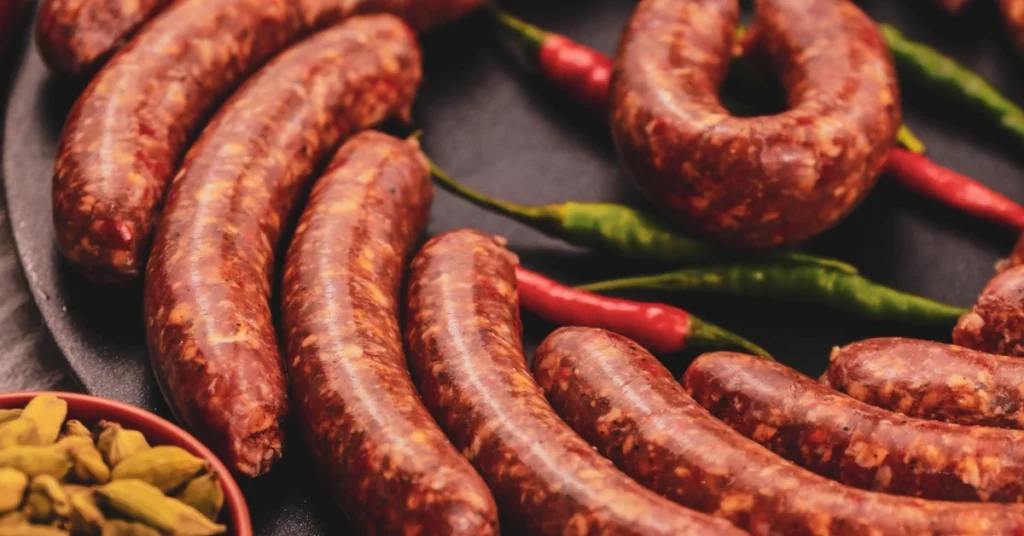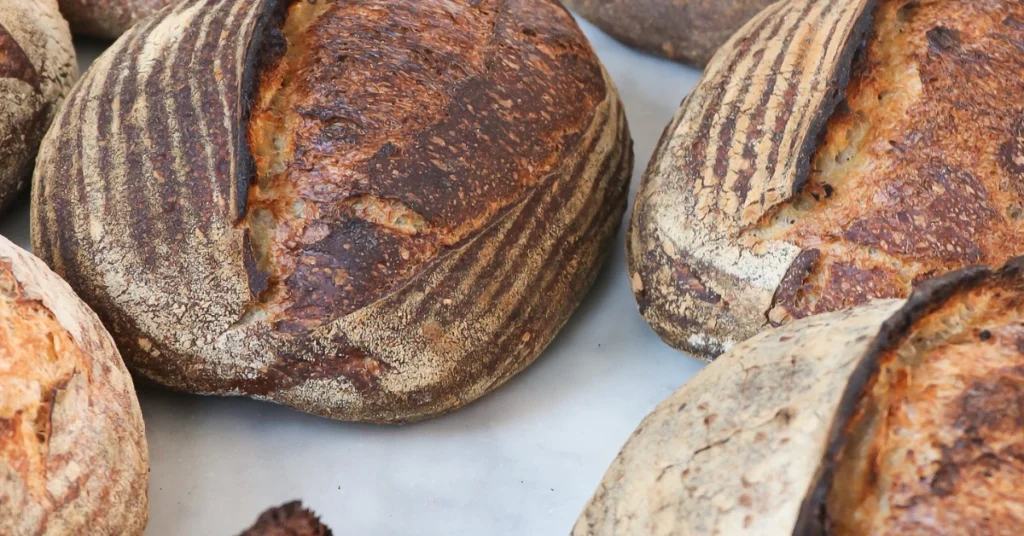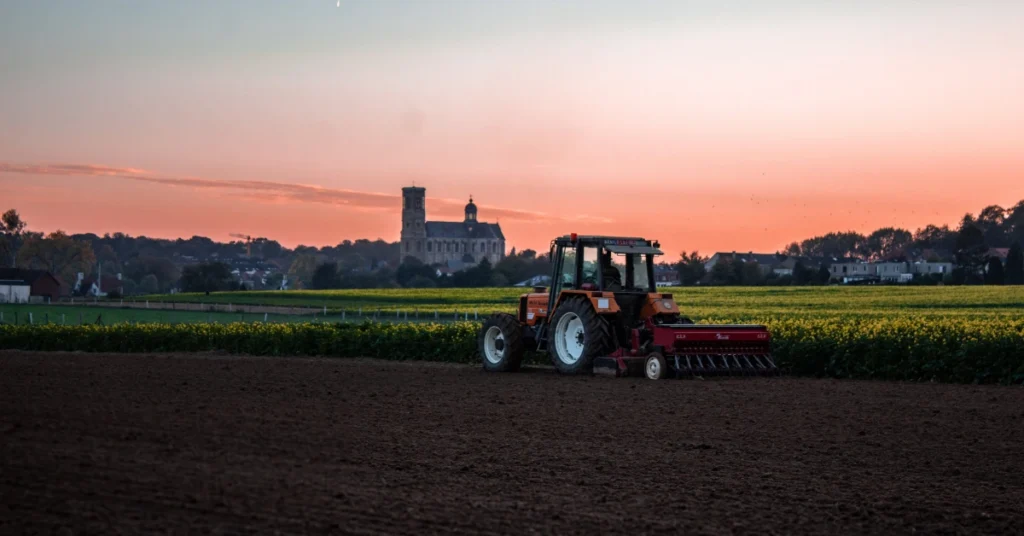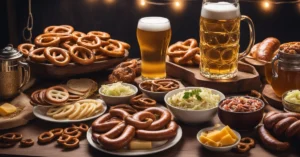Dive into the rich and varied German culinary tradition, where bold tastes and unique regional dishes form the essence. No matter if you prefer meat or vegetarian options, explore the beers, bread, and other elements pivotal to Germany’s gastronomic legacy. Explore this guide to relish in the classic flavors that set German food apart in its delightful uniqueness.
History of German Food Culture
German food culture has a rich and diverse history that spans centuries. The cuisine has been influenced by various factors, including geography, climate, and historical events. German food has been shaped by the country’s location in Central Europe, which has made it a melting pot of different cultures and culinary traditions.
The history of German food culture dates back to the Middle Ages when German cuisine was heavily influenced by the Roman Empire. During this time, the Germans adopted the use of spices and herbs to flavor their food, which is still a prominent feature of German cuisine today. The use of beer in cooking also became popular during this time, and it is still widely used in many traditional German dishes.
In the 16th century, the Reformation brought about significant changes in German food culture. The Protestant movement led to a shift away from the Catholic Church’s strict dietary laws, which allowed for greater freedom in food choices. This led to the development of new dishes and culinary traditions that are still popular today.
During the 18th and 19th centuries, German cuisine underwent significant changes due to the country’s economic and political developments. The rise of industrialization led to the development of new food preservation techniques, which allowed for the mass production of food. This led to the widespread availability of food items such as sausages and bread, which are still staples of German cuisine.
In the 20th century, German food culture was heavily influenced by the country’s political events. The two world wars led to food shortages and rationing, which forced Germans to be creative with their food choices. This led to the development of new dishes and cooking techniques that are still popular today.
Overall, German food culture has a rich and diverse history that has been shaped by various factors. Today, German cuisine is known for its hearty and flavorful dishes, and it continues to be a popular cuisine around the world.
Regional Variations
German cuisine is not just a national cuisine but is also a cuisine of regions. Germany is divided into 16 federal states, and each state has its own unique food culture and traditions. Here are some regional variations that you should try when you visit Germany:
Northern Germany

Northern Germany’s cuisine is known for its seafood dishes. The region is home to many rivers, lakes, and the North Sea, which provide a variety of fish and seafood. Herring is a popular fish in the region, and it is often served pickled or smoked. The region is also famous for its Rote Grütze, a dessert made with red berries, and Labskaus, a dish made with corned beef, potatoes, and onions.
Southern Germany
Southern Germany’s cuisine is known for its hearty and filling dishes. The region is famous for its sausages, such as Weisswurst, which is a white sausage made with veal and pork, and Bratwurst, which is a grilled sausage made with pork. The region is also famous for its Spätzle, which is a type of soft egg noodle, and its Käsespätzle, which is a dish made with Spätzle and cheese.
Eastern Germany
Eastern Germany’s cuisine is influenced by its history and geography. The region was once part of the Soviet Bloc, and its cuisine reflects this influence. The region is famous for its hearty dishes, such as Sauerbraten, which is a type of marinated beef, and its potato dishes, such as Kartoffelpuffer, which are potato pancakes. The region is also famous for its beer, and its breweries produce some of the best beer in Germany.
Western Germany
Western Germany’s cuisine is influenced by its proximity to France, Belgium, and the Netherlands. The region is famous for its wine, and its vineyards produce some of the best wine in Germany. The region is also famous for its potato dishes, such as Reibekuchen, which are potato pancakes, and its sausages, such as Mettwurst, which is a type of smoked sausage. The region is also known for its sweet treats, such as Schwarzwälder Kirschtorte, which is a type of chocolate cake with cherries.
In conclusion, German food culture is diverse and rich in traditions. Each region has its own unique cuisine, and it’s worth exploring them all.
Popular German Dishes
German food culture is known for its hearty and filling dishes that are perfect for cold weather. From sausages to bread to desserts, German cuisine has a lot to offer. Here are some of the most popular German dishes that you should try:
Sausages

When it comes to sausages, Germany has a lot of varieties to offer. Some of the most famous ones include:
- Bratwurst: a type of sausage made from pork and seasoned with salt, pepper, and other spices.
- Currywurst: a type of sausage that is sliced and served with a curry ketchup sauce.
- Weisswurst: a type of sausage made from veal and pork that is flavored with parsley, lemon, and cardamom.
Breads

German bread is famous for its variety and quality. Some of the most popular types of bread in Germany include:
- Pretzels: a type of bread that is twisted into a knot shape and sprinkled with salt.
- Rye bread: a type of bread that is made from rye flour and has a dense texture and a slightly sour taste.
- Pumpernickel: a type of dark rye bread that is made from coarsely ground rye flour and has a long baking time.
Desserts
German desserts are known for their rich and indulgent flavors. Some of the most popular German desserts include:
- Black Forest cake: a chocolate cake that is layered with whipped cream and cherries and topped with chocolate shavings.
- Apple strudel: a pastry that is filled with apples, raisins, and cinnamon and served with vanilla sauce.
- Stollen: a fruitcake that is made from dried fruits, nuts, and spices and is traditionally eaten during Christmas.
Whether you’re a fan of sausages, bread, or desserts, German cuisine has something for everyone to enjoy.
German Dining Etiquette
When dining in Germany, it’s important to be aware of the local customs and traditions. German food culture places a strong emphasis on table manners and etiquette, and knowing the basics will help you avoid any unintentional faux pas.
Here are a few key points to keep in mind:
Utensil Usage
The standard European dining etiquette applies in Germany. Hold your fork in your left hand and your knife in your right hand while cutting food. After cutting, switch the fork to your right hand to eat. Don’t put the knife or fork down except to drink or pick up bread. The knife (in your right hand) is also used to help discreetly guide food onto your fork (in your left hand). Do not cut up an entire piece of meat at once.
Table Manners
Compared to American eating culture, Germans tend to eat less with their fingers and use forks and knives, even when eating french fries. Both a knife and fork are used in order to eat a sit-down meal. Do not just use your knife to first cut your food and then only eat with your fork the little pieces.
Drinking

When toasting, it’s customary to make eye contact with each person at the table and say “Prost!” (cheers!). It’s also important to clink glasses with everyone at the table before taking a sip. Keep in mind that it’s considered impolite to take a sip before everyone has been served.
Payment
In Germany, it’s common to split the bill evenly among all diners. If you want to pay separately, be sure to let your server know in advance. When paying, it’s customary to round up the bill to the nearest euro or leave a small tip (around 5-10% of the total).
By following these basic guidelines, you’ll be able to enjoy your meal without worrying about committing any cultural faux pas. If you looking for some cheap places in Germany to dine, check out the 5 cheapest places in Germany to visit
Influence of German Food Worldwide
German cuisine has made its way around the world and has influenced many other cuisines. The country’s strong economy and international presence have led to German recipes being widely exported globally. Here are some examples of how German food has influenced other cuisines:
- Sausages: German sausages, such as bratwurst, have become popular not only in Germany but also in many other countries. In the United States, for example, sausages are a popular food item at sporting events and barbecues.
- Beer: Germany is famous for its beer, and German beer has become popular all around the world. German beer is known for its high quality and unique flavor, and many breweries outside of Germany have adopted German brewing techniques.
- Pretzels: Pretzels are a popular snack food in Germany, and they have become popular in many other countries as well. In the United States, for example, pretzels are a popular snack food that is often served at sporting events.
- Sauerkraut: Sauerkraut is a traditional German side dish that is made from fermented cabbage. It has become popular in many other countries, and it is often served as a side dish with sausages and other meats.
- Black Forest Cake: Black Forest cake is a traditional German dessert that is made with layers of chocolate cake, whipped cream, and cherries. It has become popular in many other countries, and it is often served at special occasions such as weddings and birthdays.
Overall, German food culture has had a significant impact on the culinary world, and its influence can be seen in many different cuisines.
Sustainability in German Food Culture

When it comes to sustainable food practices, Germans are leading the way. According to a nutrition report in 2021, 82 percent of Germans consider it important for food to be grown regionally. This focus on local sourcing helps reduce the carbon footprint of food transportation and supports local farmers.
In addition to regional sourcing, Germans are also prioritizing organic and vegetarian/vegan options. The same nutrition report found that 28 percent of Germans prefer organic food and 13 percent follow a vegetarian or vegan diet. This trend towards plant-based eating not only has environmental benefits but also health benefits.
The German government has also taken steps to promote sustainable food practices. The Food-based dietary guidelines in Germany encourage a diverse and balanced diet that includes plenty of fruits, vegetables, and whole-grain foods. They also advise reducing sugar and salt intake and choosing health-promoting fats.
Restaurants and food businesses in Germany are also joining the sustainability movement. Many are choosing to use biodegradable packaging and utensils, reducing food waste, and sourcing ingredients locally. Some restaurants even have their own gardens where they grow their own produce.
Overall, sustainability is a key aspect of German food culture. From regional sourcing to plant-based diets to government guidelines, Germans are committed to reducing their impact on the environment and promoting healthy eating habits.
Future of German Food Culture
German food culture has a rich history and has evolved over time, reflecting the country’s changing demographics and global influences. As we move into the future, there are several trends that are likely to shape the future of German food culture.
One trend that is already becoming more prominent is the focus on regional and locally sourced ingredients. This trend reflects a growing awareness of the environmental impact of food production and transportation, as well as a desire to support local farmers and food producers. Restaurants and food businesses are increasingly highlighting the origins of their ingredients and emphasizing the unique flavors and traditions of different regions in Germany.
Another trend that is likely to shape the future of German food culture is the growing interest in plant-based diets. While meat has traditionally been a staple of German cuisine, there is a growing awareness of the health and environmental benefits of reducing meat consumption. This trend is reflected in the increasing availability of vegetarian and vegan options in restaurants and supermarkets, as well as the popularity of plant-based meat substitutes.
Technology is also likely to play a role in the future of German food culture. From online food ordering and delivery services to smart kitchen appliances, technology is changing the way we eat and interact with food. While some may argue that technology is eroding traditional food culture, others see it as an opportunity to make food more accessible, convenient, and sustainable.
Overall, the future of German food culture is likely to be shaped by a combination of traditional and modern influences. While some aspects of German cuisine may evolve or fade away, others will continue to endure, reflecting the country’s rich history and diverse cultural influences.
Our Opinion
Now that we’ve explored some of the essential things to know about German food culture, it’s time to share our opinion.
Firstly, we must say that German food culture is incredibly diverse. From the hearty main courses to the delicious baked goods, there’s something for everyone to enjoy. However, some people may find the heavy reliance on meat and potatoes to be overwhelming.
One thing we appreciate about German food culture is the emphasis on using fresh, locally sourced ingredients. This ensures that the food is of the highest quality and supports local farmers and producers.
Another aspect of German food culture that we find fascinating is the regional variation. Each region has its own unique dishes and cooking styles, making it a culinary adventure to explore different parts of the country.
Overall, German food culture is rich and varied, with something for everyone to enjoy. Whether you’re a meat lover or a vegetarian, there are plenty of delicious options to try. So next time you’re in Germany, be sure to sample some of the local cuisines and experience the unique flavors and traditions of this fascinating country.
FAQ about the German food culture
What are typical German food recipes?
“Savor iconic German dishes like Bratwurst, Sauerkraut, and Schnitzel. Indulge in hearty treats such as Pretzels, Potato Salad, and Black Forest Cake. Explore diverse flavors in dishes like Sauerbraten, Rouladen, and Kartoffelsuppe. Elevate your culinary experience with these quintessential German recipes.”
Is there modern German food?
Yes, modern German cuisine blends traditional flavors with innovation, featuring creative dishes, international influences, and a focus on fresh, local ingredients.
Are there recipes for vegans or vegetarians?
Yes, German cuisine offers a range of vegan and vegetarian recipes, including plant-based versions of traditional dishes and innovative, meat-free creations. From hearty stews to desserts, there’s a diverse array of options for those following a vegan or vegetarian diet.
If you liked this blog post about the German Food Culture, don’t forget to leave us a comment down below to tell us about your experience with it.






